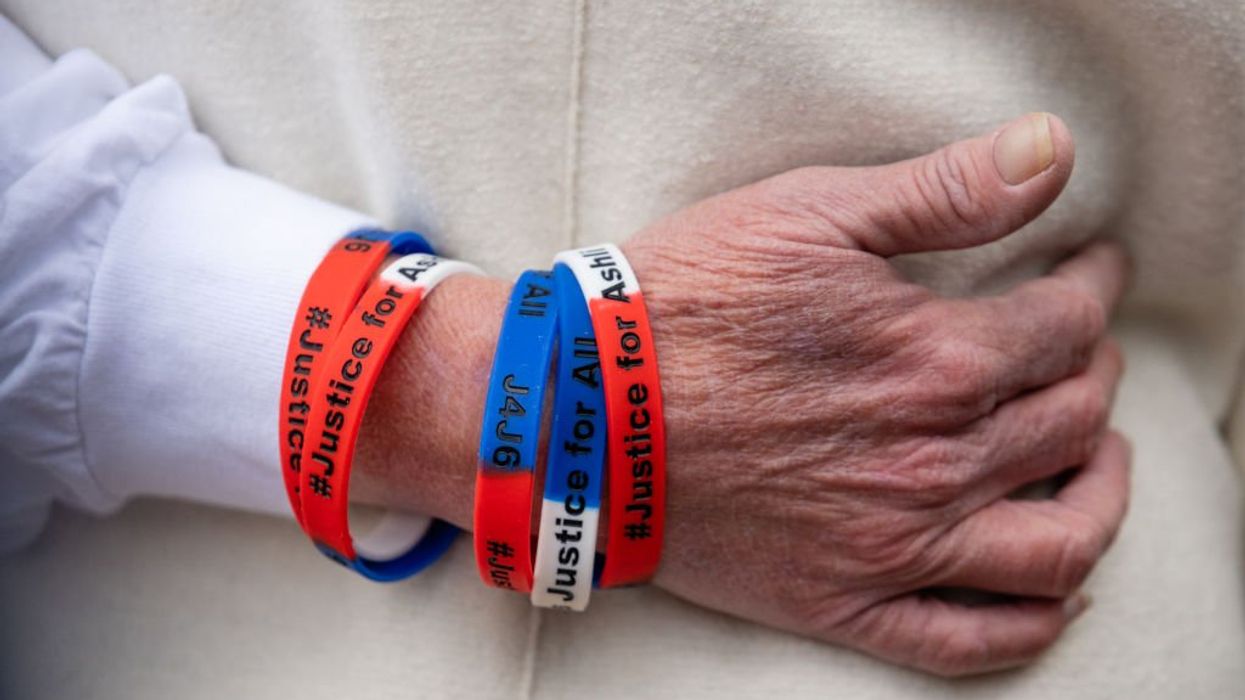
© 2024 Blaze Media LLC. All rights reserved.
"Could be exposed to hazardous levels."
While the most obvious threat at a gun range would be a person who wasn't safely using a firearm, according to some there could be a less obvious concern at many facilities: lead exposure.
Here's how the Seattle Times started off with it in a recent report:
A confused 38-year-old father in Kentucky rarely crawled out of bed.A conservation volunteer in Iowa lost feeling in his hands and feet.
A 5-year-old girl in South King County doubled over in pain and vomited.
The cause of their suffering: lead poisoning. The source: dirty gun ranges.
 Inspections suggest that some of the nation's gun ranges are not doing all they can to help limit lead exposure to workers and patrons. (Photo credit: Shutterstock)
Inspections suggest that some of the nation's gun ranges are not doing all they can to help limit lead exposure to workers and patrons. (Photo credit: Shutterstock)
Calling it a "hidden risk," the Seattle Times reported that through its investigation it found thousands of people had some degree of lead poisoning due to poor ventilation or other factors at gun ranges where lead ammunition was used.
But the risk of lead with ammunition isn't new. A report from the Centers for Disease Control and Prevention published earlier this year, found that many people who visit or work at indoor ranges had elevated levels of lead in their blood, even though there are guidelines to help control exposure.
"During 2002–2012, a total of 2,056 persons employed in the categories 'police protection' and 'other amusement and recreation industries (including firing ranges)' had elevated [blood lead levels] reported to ABLES; an additional 2,673 persons had non–work-related BLLs likely attributable to target shooting," the study authors wrote.
Further analysis revealed issues involving poor ventilation, housekeeping and medical surveillance, according to the CDC.
"Interventions for reducing lead exposure in firing ranges include using lead-free bullets, improving ventilation and using wet mopping or high-efficiency particulate air (HEPA) vacuuming to clean," the study suggested.
 Because of its faulty ventilation system that overexposed employees to lead and put the public at risk, an official for Washington’s Labor and Industries once called Champion Arms in Kent the worst Washington gun range ever inspected. (AP / The Seattle Times, Mark Harrison)
Because of its faulty ventilation system that overexposed employees to lead and put the public at risk, an official for Washington’s Labor and Industries once called Champion Arms in Kent the worst Washington gun range ever inspected. (AP / The Seattle Times, Mark Harrison)
The Seattle Times reported that in its own investigation, it found several gun range owners either weren't knowledgeable about the laws in place to protect workers and patrons or they just weren't following them correctly. According to statistics from the Occupational Safety and Health Administration, 86 percent of gun ranges inspected had at least one lead violation, the Times reported.
Some citations come with hefty fines. For example OSHA fined an Illinois range $111,000 when it found its workers were exposed to airborne lead 12 times higher than the allowed level. Even more severe, OSHA proposed fining range in Florida for more than $2 million for the more than 50 violations.
Despite a high percentage of violations, the Susan Recce with the National Rifle Association told the Times "the issue of lead problems for indoor ranges is extremely rare."
The CDC has said that those who work or train at ranges frequently "could be exposed to hazardous levels of lead." Lead poisoning symptoms include nausea, diarrhea, vomiting, headaches, kidney problems and more.
For those who think that the lead exposure argument could play a larger roll in the gun control debate, Colleene Barnette, a firearms instructor who also had lead poisoning, told the newspaper that it shouldn't be a factor.
“The last thing you need is to stop shooting — and for people to hold lead against shooting as a sport," she said.
Humans aren't the only animals vulnerable to possible lead exposure from firearms either.
In the past, wildlife activists have sought to curtail the use of lead bullets, saying they were poisoning wildlife. The National Rifle Association later celebrated the Environmental Protection Agency's decision not to ban such ammunition, saying it didn't have the authority to address the presence of lead in bullets.
"In the modern era, instances of lead poisoning are mainly attributed to the ingestion of highly soluble forms of lead in industrial products such as leaded paint, gasoline and pesticides," the "Hunt for Truth Association" website stated about lead, defending its allowance in ammo.
Here's some of what the CDC recommends for range workers for enhanced safety:
Wear respirators and full protective outer clothing when performing range maintenance.
Wear gloves and eye protection when using chemicals to clean weapons or firing range surfaces.
Wash hands, forearms, and face before eating, drinking, smoking, or contact with other people.
Change clothes and shoes before leaving the firing range facilities.
Wash clothes or uniforms used at the firing range separately from family’s clothing.
Read the Seattle Times full investigation into lead exposure at gun ranges.
(H/T: io9)
—
Front page image via Shutterstock.
Want to leave a tip?
We answer to you. Help keep our content free of advertisers and big tech censorship by leaving a tip today.
Want to join the conversation?
Already a subscriber?
more stories
Sign up for the Blaze newsletter
By signing up, you agree to our Privacy Policy and Terms of Use, and agree to receive content that may sometimes include advertisements. You may opt out at any time.
© 2024 Blaze Media LLC. All rights reserved.
Get the stories that matter most delivered directly to your inbox.
By signing up, you agree to our Privacy Policy and Terms of Use, and agree to receive content that may sometimes include advertisements. You may opt out at any time.


